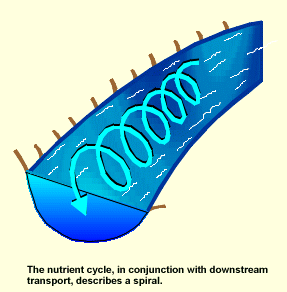The Chesapeake Bay Total Maximum Daily Load (TMDL) sets goals for total nitrogen (TN), total phosphorus (TP), and total sediment reduction by political jurisdiction and by river basin in order to restore aquatic habitat. However, using total nitrogen and phosphorus rather than specific species of these nutrients, can mask processes that ultimately determine restoration success in terms of supporting fish communities and human safety, among other outcomes. For example, in some areas of the Chesapeake Bay Watershed, the proportion of phosphorus entering in a bio-available dissolved form (ortho P) is increasing, despite or even as a side effect of management efforts. A growing body of scientific evidence indicates that the speciation of nutrients influences algal biomass and the extent of hypoxia, which are reflected in water quality standards. Yet nutrient species effects are not factored into targeting TMDL effort nor the crediting system that tracks progress of jurisdictions towards their goals.
The consideration of nutrient species within the Chesapeake Bay TMDL and the broader management strategies of the Chesapeake Bay Program (CBP) would likely increase the efficiency of management by targeting effort to the nutrient species most responsible for hypoxia. For example, practices that reduce nitrate delivered to the Bay are likely more effective in reducing hypoxia than practices that reduce organic nitrogen, the latter likely being more effective in reducing harmful algal blooms. Additionally, achieving water quality goals within freshwater rivers, lakes, and reservoirs may require different reductions of nutrient species and timing of delivery. Management plans might better address multiple endpoints at a reduced cost, if these relationships were understood and made part of the management evaluation structure.
Calculations similar to those proposed have already been estimated and reflect geographic differences of nutrient loads in terms of hypoxia effects. Loads of N and P generated from different locations were converted into the common currency of “eutrophying units” to support the exchange of N and P reductions requested by some jurisdictions. A similar system to incorporate how nutrient species affect ecological outcomes could use the same concept of eutrophying units but has substantial information needs. Synthesis of existing science and new research or expert judgement to fill data gaps are required to build an understanding of the relative magnitude of speciation effects on hypoxia. Such effects must be considered under heterogeneity of nutrient inputs, land use, watershed physical characteristics, stream processes, and water body biogeochemistry. In addition, the ability of management practices to reduce specific nutrient species is understood for some, but not all, practices.
Movement toward a system that incorporates nutrient species is critical to successfully achieving the TMDL goals. In many areas of the Chesapeake Bay watershed, total nutrients are declining while bioavailable forms that contribute the most to hypoxia are increasing. These trends suggest that some waterways may not respond as expected to achieving the total nutrient cap. Synthesizing what is known about bioavailable forms of nutrients has the potential to improve the CBP’s ability to quantify effects of management efforts under a variety of conditions to ensure efforts are ultimately effective at restoring water bodies.
Citation:
Shenk, G., Wainger, L., Wu, C., Capel, P., Friedrichs, M., Hubbart, J., Iho, A., Kleinman, P., Sellner, K., Stephenson, K. 2020. Assessing the environment in outcome units. STAC Publication Number 20-003, Edgewater, MD. 34 pp.

